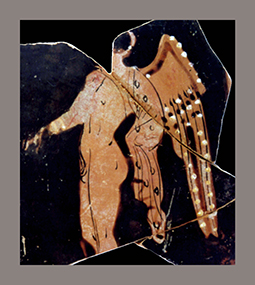Author: D. Elia
Download article as .pdf: Locri Epizefiri: per una contestualizzazione della ceramica figurata di produzione occidentale. L’abitato e l’area esterna alle mura tra “agorà emporica” e Adonion
 Recent research has allowed for a deeper knowledge of the distribution and production of Western red figure pottery in Locri Epizephyrii and its territory, based mainly on the documentation from the necropoleis. However, other areas of the city also reveal its widespread presence during the 4th century B.C. The re-evaluation of the edited documentation and the analysis of some unpublished materials from different areas, both inside the city walls along the sea and in the area immediately outside, make it possible to reflect on the characteristics of the distribution of this pottery in the different contexts of discovery. In particular, the morphological repertoire is very different from that known from the necropoleis. For the area within the fortifications, it has been possible to better understand some of the contexts, but the heterogeneous functions of the buildings (residential, productive, commercial, perhaps religious) do not yet allow us to precisely delineate the frame of reference for the consumption of figured pottery. On the other hand, the distribution in the outer sector, between the city walls and the ancient coastline, where there are numerous complexes intended to cover public functions and buildings with a religious purpose, seems to be more defined. In this case, it is possible to propose an involvement in ritual activities for some significant concentrations of figured pottery. The adoption of specific vase shapes, which are rare or absent in funerary areas, is also evident.
Recent research has allowed for a deeper knowledge of the distribution and production of Western red figure pottery in Locri Epizephyrii and its territory, based mainly on the documentation from the necropoleis. However, other areas of the city also reveal its widespread presence during the 4th century B.C. The re-evaluation of the edited documentation and the analysis of some unpublished materials from different areas, both inside the city walls along the sea and in the area immediately outside, make it possible to reflect on the characteristics of the distribution of this pottery in the different contexts of discovery. In particular, the morphological repertoire is very different from that known from the necropoleis. For the area within the fortifications, it has been possible to better understand some of the contexts, but the heterogeneous functions of the buildings (residential, productive, commercial, perhaps religious) do not yet allow us to precisely delineate the frame of reference for the consumption of figured pottery. On the other hand, the distribution in the outer sector, between the city walls and the ancient coastline, where there are numerous complexes intended to cover public functions and buildings with a religious purpose, seems to be more defined. In this case, it is possible to propose an involvement in ritual activities for some significant concentrations of figured pottery. The adoption of specific vase shapes, which are rare or absent in funerary areas, is also evident.
